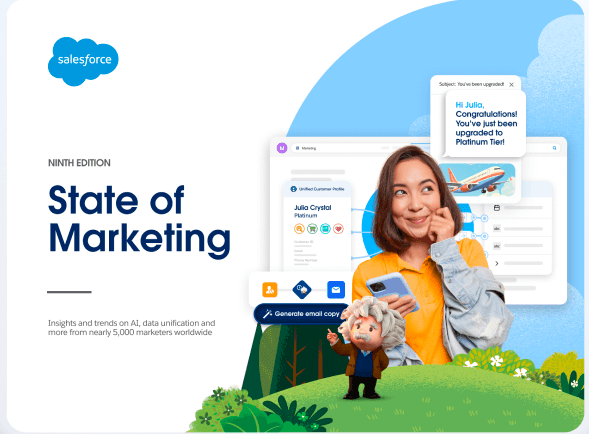Access to real-time data is a major barrier to AI success, as marketers in Singapore lag behind their global peers, according to a new report from Salesforce.
The report is based on insights from 4,850 marketing leaders across 29 countries across the world, including 100 from Singapore.
The majority of marketers in Singapore are embracing artificial intelligence, with 78% having experimented with or fully implemented AI into their workflows, according to findings.
However, many lack a solid data foundation, which hinders their success with AI. Only 21% are fully satisfied with their ability to unify customer data sources – the second lowest globally, after the Netherlands (19%).
Results from Singapore show that marketers are embracing AI with an eye on trust.
Marketers are intent on successfully applying AI in their operations with the right data, but are concerned about security.
AI implementation is a point of differentiation: high-performing marketing teams are 3.1 times more likely than underperformers to have fully implemented AI within their operations.
Top three AI use cases among marketers: generating content, automating customer interactions, and improving customer segmentation/lookalike audience modeling.
Also, marketers are shoring up their data foundations. Businesses have long struggled to connect disparate data points to create consistent, personalised experiences across customer journeys.
Yet, as third-party cookies are depreciated and AI proliferates, this quest for unified, real-time data is more critical and challenging.
Only 42% have access to real-time data to execute a campaign – the lowest globally. Meanwhile, 57% need the IT department’s help to do so.
An average of 9 different tactics are being used to collect data. Data from customer service touchpoints are the most common.
Further, marketers seek unified analytics. There is no shortage of data sources, but putting that data to work is a challenge — especially when it demands a holistic or long-term view of data.
Almost half, (49%) are tracking customer lifetime value (CTV) and 84% say they have a clear view into marketing’s impact on revenue.
In addition, marketers are most concerned about improving marketing ROI in a highly competitive landscape, yet their biggest struggle lies in both measuring results and engaging with customers in real time.
Deeper relationships emerge with account-based marketing (ABM) and loyalty programs. Companies are increasingly turning to strategies like ABM and loyalty programs for better acquisition and retention.
Yet many of these programs’ information sources remain disjointed, as does the customer experience. Among respondents, 60% say loyalty data is fully integrated across all touchpoints.
Only 35% say loyalty program functionalities are accessible across all touchpoints.
Half of B2B marketers use ABM for customer acquisition, around half use it for upselling (50%) and cross-selling (53%).
Full personalisation remains a work in progress. To meet rising customer expectations around personalisation, marketers are moving beyond broad audience segmentations, like location or age, to more specific identifiers like individual preferences or past interactions.
There is also a difference between how the highest- and lowest-performing marketing teams adapt. High performers fully personalise across an average of six channels, compared with underperformers who fully personalise across two.
Wendy Walker, VP of marketing at Salesforce ASEAN, said AI makes personalisation at scale a reality, while also driving greater opportunity for brand consistency and storytelling at every touchpoint; and fuelling efficiency for teams.
“However, as we embrace this technology, what becomes critical is the need for the data we work with to be unified across systems, to give us a comprehensive view of customer engagements,” said Walker.
“Technology should empower creativity, allowing marketers to deliver meaningful and relevant content to their audiences; this is only possible with trusted data,” she added.















